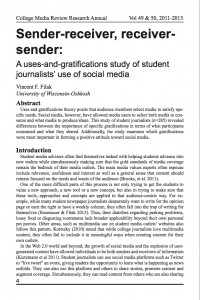An outlook of employment opportunities in the mass communication industry
By Kyle J. Miller
Dr. Charles A. Lubbers
University of South Dakota
The employment outlook in any field is dictated by the balance of supply and demand. However, the available supply of college graduates and the demand for the graduates to fill a particular job category in a field can vary greatly.
 According to a 2012 study by Becker, Vlad and Kalpen, 51,784 bachelor’s degrees were granted in the U.S. in 2011, and that number was only slightly larger than the year before. They also noted that during 2011, 203,561 students were enrolled in bachelor’s programs, a decline of .05 percent from the year before.
According to a 2012 study by Becker, Vlad and Kalpen, 51,784 bachelor’s degrees were granted in the U.S. in 2011, and that number was only slightly larger than the year before. They also noted that during 2011, 203,561 students were enrolled in bachelor’s programs, a decline of .05 percent from the year before.
Undergraduate students are studying a growing number of specializations within the mass communication field. This reflects changes in the terms used to describe the specializations, as well as a growth in those areas as a result of newer technologies. As noted in Table 1, journalism, once the dominant specialization in the field, now accounts for slightly less than 30 percent of the students. The next largest group of students is located in strategic communication programs. Students studying radio/television generally made up 4.9 percent. Clearly the concentration of students is located in the areas of journalism and strategic communications, with significantly smaller numbers in the telecommunications field.
Continue reading “I’ve graduated… now what?”









